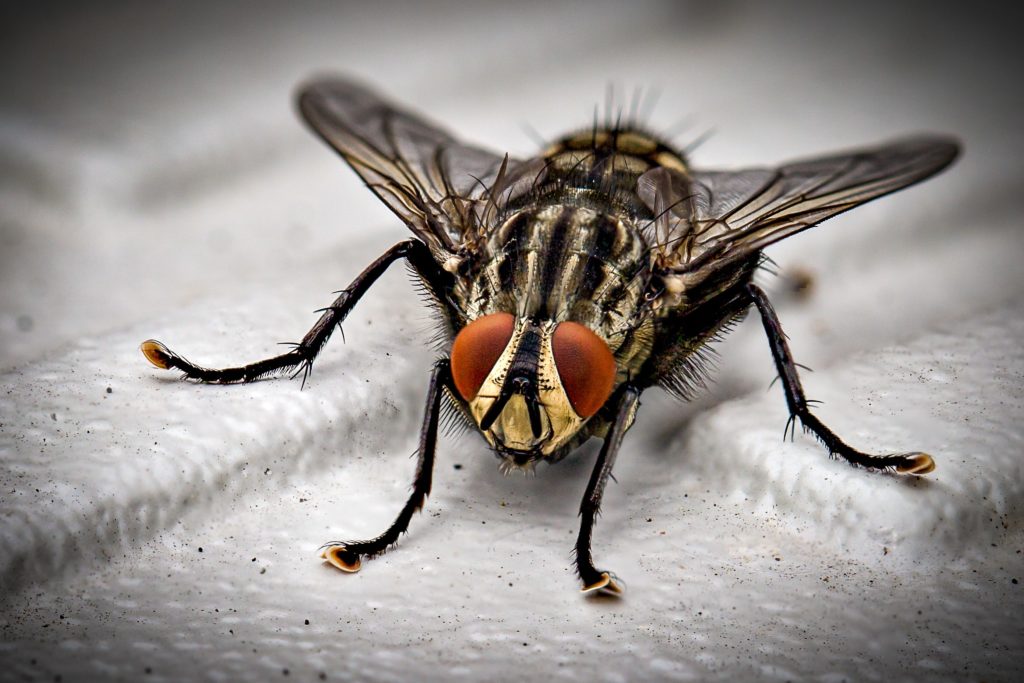Flies are everywhere! And some species are really serious problems for humans, livestock and horticulture. Communities and scientists have invested heavily in trying to eradicate flies, but it is incredibly difficult.
For example, the Tsetse fly in Africa carries two species of disease organism which are fatal for humans and livestock. These flies have therefore been the subject of serious control efforts for decades. Every control method known has been thrown at these flies, including
• bush clearing and game destruction to try to reduce the reservoir of the disease in native animals;
• ground spraying, and even aerial spraying of insecticides;
• odour-baited targets, which is cheap and useful at a local level, but usually applied on a scale so small that control is prevented by re-invasion from surrounding areas;
• insecticide-treated cattle; and
• the sterile insect technique – an area-wide program of release of sterile insects of one sex designed to eliminate populations which have already been reduced to very low levels using other methods.

life-cycle-of-a-housefly-lesson-for-kids.html
In general, flies are incredibly resilient. Their lifecycle includes several different stages – from eggs to larvae to pupae until they finally turn into the adult flies that we notice buzzing around our heads, houses or food. These different stages inhabit diverse environmental niches which are usually not obvious to us. For example, the eggs may be laid near water or in moist rotting vegetation or animal carcasses. The larvae, similarly are often not visible due to their feeding inside these moist environments. The pupae, an immobile stage, are very often situated underground or in some hidden space to reduce the chances of being found by predators or parasites. The adult stage is really just the tip of the iceberg – for every adult fly you see, there will be hundreds of the immature stages in the ground working their way towards adulthood.

The fly lifecycle is ideal for coping with environmental challenges. When conditions are very cold, development is slow or even stops. For some species, the adult stage may nearly die out over winter due to cold and frost, but the ground stages persist and form the start of the next population when spring arrives. Similarly, droughts and floods have potential to affect fly populations across very wide areas. Droughts can dry out larval food sources and floods can drown the ground dwelling stages, but still the flies persist. They survive and flourish in adjacent areas, and then re-invade when the drought breaks or the floods subside. When conditions are right, they make up for these losses by reproducing in large numbers and becoming the nuisance that we Aussies are all familiar with. We assist them in this by providing a wealth of new and abundant food sources, from rubbish, to sewerage, to large scale livestock excrement and horticultural waste.
Luckily, flies in Australia are mostly just a nuisance for people, although they can cause serious problems for livestock and pets. Whether flies are a problem on your farm or in your backyard, removing potential breeding sites and food sources and employing a trapping device such as the EnviroSafe fly trap can help to reduce the fly population in the area. Trapping flies early in the season can also help to reduce total fly population numbers over the season. The country is big, and flies are proven survivors – but with yard maintenance and trapping, flies can be controlled in your local area.

